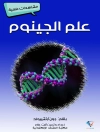Describes the structure and function of important peptides from several different organisms. An exciting development is the use of these peptides or their analogues in the treatment and prevention of infectious diseases. Considers ways in which these peptides may be used to control the insect vectors of key pathogens including the malarial parasite. Discusses the role of antimicrobial peptides in the mammalian immune system and their interaction with other components of that system.
İçerik tablosu
Partial table of contents:
Design and Synthesis of Antimicrobial Peptides (R. Merrifield,
et al.).
Gene-Encoded Antibiotics Made in Bacteria (H. Sahl).
Function of Antimicrobial Proteins in Insects (S. Natori).
Bactericidal Permeability-Increasing Protein in Host Defence
Against Gram-Negative Bacteria and Endotoxin (P. Elsbach).
Potential Therapeutic Applications of Magainins and Other
Antimicrobial Agents of Animal Origin (L. Jacob & M.
Zasloff).
Primitive Vertebrate Immunity: What Is the Evolutionary
Derivation of Molecules That Define the Adaptive Immune System?
(M. Flajnik).
Antimicrobial Proteins with Homology to Serine Proteases (J.
Gabay).
Antimicrobial Peptides as Agents of Mucosal Immunity (C.
Bevins).
Indexes.
Yazar hakkında
Joan Marsh is the editor of Antimicrobial Peptides, published by Wiley.
Jamie Goode is a British author with a Ph D in plant biology, and a wine columnist of The Sunday Express. Goode also contributes to wine publications such as Harpers, The World of Fine Wine, Decanter, Grapes TALK and Sommelier Journal.












